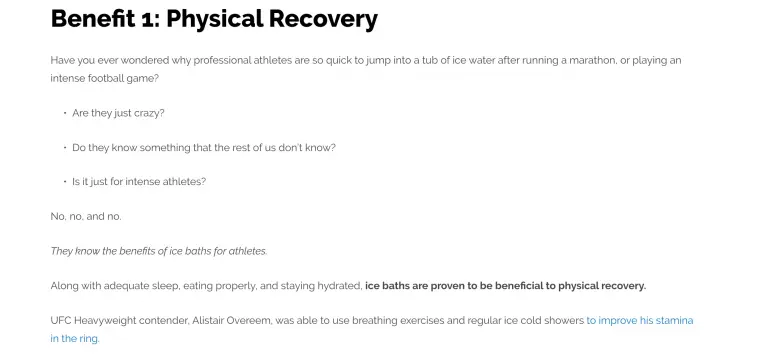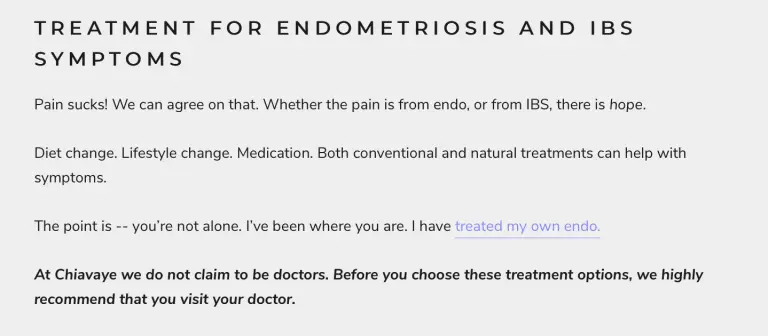Last updated on October 5th, 2023
As a marketer, you aim to write content that ranks high on Google and increase organic traffic. And the way to get there lies in three magic words: Search Engine Optimization (SEO).
But what is SEO content writing exactly?
Simply put, it’s the process of writing content to make it visible on the first page of major search engines like Google. High SEO rankings increase your chances of getting free, recurring, and highly relevant traffic to your website. The result is more money in your bank.
So how do you write content for SEO and get on the coveted first page of Google? Read on to find out!
The Impact of SEO Writing on Search Engine Rankings
1. How SEO Writing Improves Search Engine Rankings
To realize the significance of SEO, you must first understand how Google rankings work. When Google ranks your website, it usually looks for three major things: authority, relevancy, and usefulness to end users.
This is where SEO content writing assumes importance. It helps improve Google’s opinion of your page by focusing on the following aspects:
- Researching for target keywords
- Creating quality content that matches the user’s intent
- Optimizing headers for easy page crawling
However, SEO in content writing goes beyond just covering all possible keyword combinations and search terms. It also focuses on creating engaging content that provides valuable information to readers and helps them make the right decision.
2. The Role of Backlinks in SEO
Backlinks refer to links from someone else’s site to your website. They’re recommendations from another website to view your content and learn more about a specific topic. Since backlinking happens outside your website, it’s also known as off-page SEO.
Backlinks improve your rankings because search engines view endorsements from other websites as a sign of authoritativeness and relevancy. The more authoritative your website content, the more Google will favor you.
Additionally, backlinks enhance your website’s visibility and help you gain more visitors through referral traffic.
3. Measuring the Success of SEO Writing
It’s crucial for marketers to continually measure the efficacy of their SEO efforts and make timely adjustments as necessary. After all, it isn’t easy to improve what you can’t measure.
An SEO writer should track everything, from visibility and rankings to crawl efficiency and backlinks. Defining and tracking your success will help push you to improve and pivot your priorities.
While you can measure as many KPIs as you like, here are a few you should not miss out on:
- Revenue, ROI, and conversions
- Website traffic
- Rankings on search engines
- Website health and visibility
- Crawl efficiency and backlinks
4. Common Mistakes to Avoid in SEO Writing
While incorporating the best practices to improve SEO, you cannot overlook common SEO content writing mistakes. Here are some errors SEO professionals make that can hurt their SEO ranking:
- Writing for search engines instead of readers
- Writing content without proper research
- Publishing non-original content
- Stuffing keywords rather than implementing them naturally in the content
- Using generic or ineffective anchor texts (instead, opt for a variety of anchor texts)
- Skipping title tags and meta descriptions
- Failing to satisfy search intent
- Not optimizing for mobile
10 Best Practices for SEO Writing
Here are some best practices and SEO tips for content writing to rank high on Google in 2023.
1. Use Keywords Strategically
Choosing the right keywords can make all the difference in outranking your competitors and rising to the top spot on search engines.
While search volume is a good metric for deciding the popular keywords, you must ensure they’re highly relevant to your business and industry. Also, it’s not just about what keywords you use but how you use them. The best practice would be to include them organically in the content and refrain from over-stuffing.
2. Write for Humans and Search Engines
Focusing entirely on writing content for SEO can make your content too robotic. Remember, your content won’t appeal to search engines unless it appeals to your audience. So, always keep your user’s interests and motivation in mind and address their challenges and pain points in your writing.
Good SEO content should resonate with the audience and thoroughly answer their search intent.
3. Use Header Tags
Header tags are HTML tags used to introduce the content below them. Think of them as chapter titles in printed books. These tags are good for SEO because they structure your content and make it readable and accessible for users.
As for search engines, headers provide them with a hierarchy and give a better context of what your content covers.
4. Optimize Images
Images with high resolution and larger dimensions considerably impact your page loading speed. For fast page loading and better SEO, compress your images to optimum size using good quality online image compressors.
Also, consider adding alt texts to images. They provide search engine crawlers with better image context and are a key contributing factor to better rankings.
5. Create High-Quality Backlinks
We’ve already discussed the role of backlinks in SEO. However, remember that it’s not the quantity but the quality of backlinks that impress Google.
Publishing informative content and original research, creating infographics, and guest blogging are some effective ways to build high-quality backlinks organically.
6. Use Meta Tags
Every content piece must have a title and meta description. Unique and attractive meta tags entice users to open your page. They also tell search engines what your content is about so they can appropriately display your website on search results.
The ideal length for a meta title is 70 characters, and for a meta description is 160.
7. Use Internal Linking
Linking to related pages or posts on your website helps the audience discover more of your content and trust you to be a credible source of information on your niche.
From the SEO viewpoint, internal links help pass authority (or PageRank) to important pages on your site. So, include internal links that tie naturally to your content for better SEO.
8. Use External Linking
If you add quotes, data, research, or statistics in your post, link them to their source. It suggests that you’ve done your research and can be trusted, thereby increasing your credibility with both the audience and search engines.
You can also link to reputable and helpful pages (that aren’t your competitors) to offer readers additional information you haven’t covered on your website.
9 Use Structured Data
Structured data is a standardized format for providing information and classifying the contents of a page. Adding structured data to your content enables the creation of ‘rich’ search results or snippets that are more engaging to users.
You can find structured data markup for almost any type of content on Schema.org and use them to enhance your visibility and SEO.
10. Monitor Your Progress
Monitoring and tracking your progress is an essential part of SEO-based content writing. It allows you to verify the progress you’re making in your SEO efforts.
It’s even more important to track when trying a new technique. You can quickly understand what’s working in your favor and what’s not and can take corrective actions for better results.

Top Performing Examples of SEO Content Writing
A great way of learning how to write an SEO article is by looking at top-performing SEO content and analyzing its success. Here are some excellent examples of SEO writing to learn from.
1. Easy Readability
While searching for information on the internet, you often come across web pages that overwhelm you with a sheer volume of information packed in one paragraph. Such web pages are hard to read and often turn visitors away, even when they could satisfy the user queries.
To attract and retain visitors, you need to present information in a way that is easy to read and digest. A great example of this is Clarity Council’s blog.
Below is an excerpt below from one of their blogs. Not only is the messaging clear and concise, but also formatted in a way that’s easy to skim. Also, the author has highlighted the focus part, so readers looking for quick answers can easily spot it.

2. The Right Tone
Finding the right tone of voice can make all the difference in connecting with your audience. It’ll make your audience feel understood and encourage them to try your product or solution.
Your tone can be conversational, humorous, friendly, or formal, depending on your audience. However, when dealing with sensitive issues, you must make the extra effort to sound compassionate and empathetic.
Here’s a writing sample from Chiavaye, a lubricant created for women with endometriosis. You’ll see that while the writing is conversational and direct, the writer also empathizes with the readers and makes them feel comfortable by stating that they’re not alone.

3. Catchy Headlines
The headline gives the first impression of your content to the audience. It should be intriguing enough that the audience would want to click it and read the entire post.
One effective headline technique is to use numbers in the headlines. A study by Conductor found that headlines with numbers were the most preferred headline types, with 36% preference. They are also likely to generate more social shares and attention.
If you open the BuzzFeed homepage, you’ll see that most of its headlines are listicles with specific numbers. Now you know one reason why the site gets so many clicks, views, and visitors.
4. Early Demonstration of Relevancy
Writing lengthy introductions might work for scoring on your term papers, but they hardly work for SEO purposes. Remember, your goal is to write relevant content so that Google puts you at the top of search results. An effective way to prove relevancy is to target the main keywords early on in the content.
Here’s a HubSpot article that demonstrates the point. The piece talks about writing email lines, and within the first 50 words, the writer has already targeted the main keyword three times.
Take the lesson from HubSpot and try increasing the keyword density at the beginning of your next blog to see how it fares for you.

5. Crisp and Professional
Writing SEO articles on technical content can often be jargon-heavy, making them difficult to comprehend. Flexbase, an automated payment platform for contractors based in San Francisco, tackles the problems quite diligently.
Here’s a screenshot from their page talking about Lien Wavers in Texas. Flexbase has presented the supposedly boring content in a way that is easy to read and digest.
Though the style is formal and the content does contain construction-related jargon, readers will have no problem understanding what Flexbase offers, that too very quickly!

How to Implement SEO Writing for Your Business?
Now that you’re equipped with all the essential tips about SEO-based content writing, let’s look at how to implement SEO writing for your business.
1. Creating an SEO Writing Strategy
Creating a solid SEO strategy is the first step toward winning the SEO game. It helps you organize the content to gain maximum organic traffic from search engines. This way, search engine bots will identify your area of authority and better rank your site.
Having an SEO strategy is essential to stay on track while creating content. With a strategy in place, you can write SEO articles users search for instead of random articles. Creating a solid SEO strategy should entail the following steps:
- Making a list of topics
- Researching keywords based on the topic
- Building pages for each topic
- Creating a consistent blogging schedule
- Creating a link-building plan
- Staying up-to-date on new SEO practices
- Monitoring your success
2. Hiring an SEO Writer or Agency
The next step is hiring an expert SEO content writer or agency to help you meet your SEO goals.
Outsourcing is a popular option in SEO blog writing since it helps businesses leverage the expertise of professional writers. But before you start hiring, you need to decide whether you want an in-house writer, a freelancer, or an agency. All options have pros and cons, which you need to gauge before deciding.
Alternatively, you can choose Wittypen as your content partner. We have a pool of over 1400 talented SEO writers specializing in various domains. Plus, our platform provides management, quality, flexibility, and the ability to scale, to help your brand reach new heights. Sign up today to see how we work!

3. Tips for Working with an SEO Writer
To make your partnership with the SEO content writer successful and generate awesome content that drives results, follow the tips below:
- Be clear about the scope of the project. This includes payment terms, deadlines, number of revisions, etc.
- Provide the writer with essential project information such as the target audience, business information, brand voice, content length, links you want to add, etc.
- Communicate the specific content creation tasks they are responsible for. Will they do the keyword research, or will you do that from your end? Do they need to supply images as well?
- Determine the communication process. They could be video-friendly platforms like Google Workspace or instant chat platforms like Slack.
- Choose collaborative writing platforms like Google Docs for easy edits.
- Provide feedback.
Get Started With SEO Writing!
In the end, SEO content writing boils down to satisfying the searcher’s intent with the best possible answer and presenting it in a manner that’s easily skimmable and digestible.
Follow the ten best practices mentioned above and climb your way to the top of the SEO ladder! Also, note that search engines’ ranking algorithms change from time to time. Make sure to stay abreast of the latest updates and guidelines.
FAQs
1. What is SEO writing, and how does it work?
SEO writing is following SEO best practices while creating and optimizing content to rank on search engines like Google. While writing articles for SEO, you should not only answer user queries but also present the answer in an attractive and digestible manner.
2. How do I optimize my website for SEO?
You can optimize your website for SEO by following these SEO content writing practices:
- Use keywords strategically
- Write for humans and search engines
- Use header tags
- Optimize images
- Create high-quality backlinks
- Use meta tags
- Use internal linking
- Use external linking
- Use structured data
- Monitor your progress
3. How can I improve my website’s search engine ranking?
You can improve your website’s search engine ranking by creating high-quality content that answers user queries and optimizing them for SEO. If you aren’t an expert in writing SEO articles, you can hire a professional SEO web content writer to do the job.
4. What are the best practices for SEO writing?
The best practices for SEO writing include:
- Structuring the content
- Using relevant keywords
- Using header tags and meta tags
- Backlinking
- Adding internal and external links
- Optimizing images
5. How important is keyword research for SEO ranking?
Keyword research is an essential part of writing articles for SEO. It helps you find out what users are searching on search engines. You can then create quality content using the keywords to outrank your competitors.
6. How do I create SEO-friendly content?
Article writing for SEO is mainly about following the SEO guidelines and best practices. At the same time, you must ensure that you don’t write specifically for search engines but more so for your readers.
7. How can I track my website’s SEO performance?
You can track your website’s SEO performance by monitoring key KPIs such as revenue, conversions, website traffic, rankings on search engines, website health, visibility, crawl efficiency, and backlinks.









